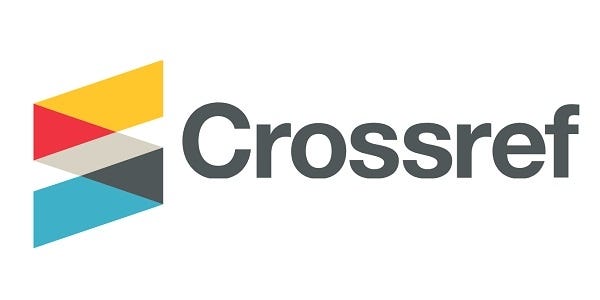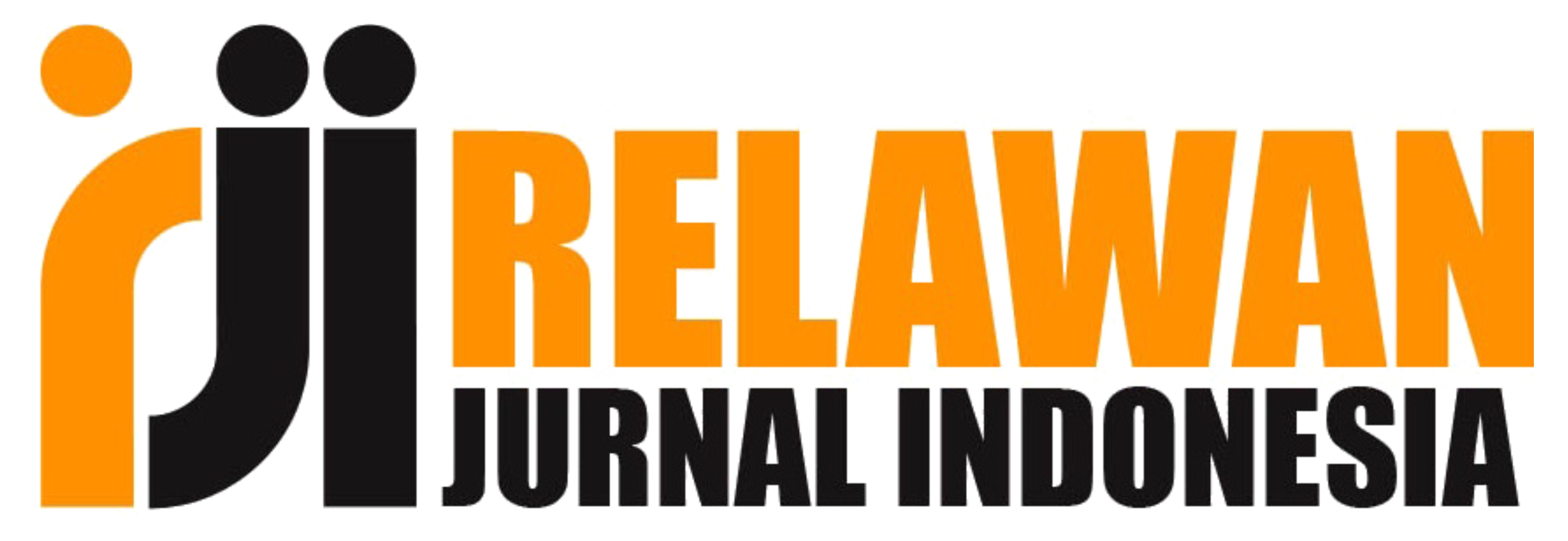Perancangan Employee Value Proposition Melalui Pendekatan Value Proposition Canvas (Studi Kasus Perusahaan X)
DOI:
https://doi.org/10.37385/ceej.v6i3.8708Keywords:
Employee Value Proposition, Value Proposition CanvasAbstract
Perusahaan X merupakan perusahaan yang bergerak di bidang otomotif, khususnya dalam kegiatan impor komponen kendaraan, distribusi logistik, dan perakitan kendaraan dalam negeri. Dalam menghadapi ketatnya persaingan bisnis, Perusahaan X dituntut untuk tidak hanya mempertahankan eksistensinya tetapi juga untuk menciptakan nilai tambah bagi karyawannya di tengah gencaran persaingan bisnis. Salah satu metode yang dipercayai dapat menciptakan nilai tambah adalah dengan pembentukan perancangan Employee Value Proposition yang efektif. Penelitian ini bertujuan untuk dapat membentuk EVP di Perusahaan X (nama samaran), Penelitian ini akan menggunakan pendekatan deskriptif kualitatif dengan teknik pengumpulan data melalui wawancara mendalam dan studi literatur. Hasil survei internal menunjukkan bahwa sebagian besar karyawan berada dalam kategori Unsupported (40,5%), yang mencerminkan karyawan yang terikat (engaged), namun merasa kurang mendapatkan dukungan dari perusahaannya. Penelitian ini akan mengidentifikasi dan menentukan lima komponen utama dalam EVP, yaitu financial rewards, career development, work environment, employment benefit, dan company culture yang disesuaikan dengan kebutuhan Perusahaan X berdasarkan hasil wawancara karyawan di internal perusahaan. Hasil dari penelitian ini bertujuan untuk dapat memberikan kontribusi strategis bagi Perusahaan X dalam meningkatkan keterikatan, retensi, dan kinerja karyawan secara berkelanjutan di masa yang akan datang.
References
Ariyanto, R. (2021). Employer branding and employee value proposition: The key success of startup companies in attracting potential employee candidates. Annals of Human Resource Management Research, 1(2), 113–125. https://doi.org/10.35912/ahrmr.v1i2.728
Backhaus, K., & Tikoo, S. (2004). Conceptualizing and researching employer branding. In Career Development International (Vol. 9, Issue 5). Emerald Group Publishing Limited. https://doi.org/10.1108/13620430410550754
Bakker, A. B., & Demerouti, E. (2017). Job demands-resources theory: Taking stock and looking forward. Journal of Occupational Health Psychology, 22(3), 273–285. https://doi.org/10.1037/ocp0000056
Bakoti?, D. (2016). Relationship between job satisfaction and organisational performance. Economic Research-Ekonomska Istrazivanja , 29(1), 118–130. https://doi.org/10.1080/1331677X.2016.1163946
Baktia, R. (2024). Pengaruh Disiplin Kerja, Lingkungan Kerja, dan Employee Engagement terhadap Kepuasan Kerja Pegawai pada Dinas Ketahanan Pangan dan Peternakan Provinsi Jawa Barat. JEMSI (Jurnal Ekonomi, Manajemen, Dan Akuntansi), 10(1), 589–598. https://doi.org/10.35870/jemsi.v10i1.2056
Braun, V., & Clarke, V. (2006). Qualitative Research in Psychology Using thematic analysis in psychology Using thematic analysis in psychology. Qualitative Research in Psychology, 3(2), 77–101. http://www.tandfonline.com/action/journalInformation?journalCode=uqrp20%5Cnhttp://www.tandfonline.com/action/journalInformation?journalCode=uqrp20
Cable, D. M., & Judge, T. A. (1996). Person–organization fit, job choice decisions, and organizational entry. In Organizational Behavior and Human Decision Processes (Vol. 67, Issue 3, pp. 294–311). Elsevier Science. https://doi.org/10.1006/obhd.1996.0081
Charity, I., Innocent, C., & Sonna, H. (2024). Strategic Alignment and Organizational Responsiveness?: A Process-Orientated Perspective. March. https://doi.org/10.13140/RG.2.2.16548.69764
Creswell, J. W. J., & Creswell, J. D. (2018). Research Design Qualitative, Quantitative, and Mixed Methods Approaches (Fifth Edition). In Sage Publication. https://doi.org/10.4324/9780429469237-3
Daher, W. (2023). Saturation in Qualitative Educational Technology Research. Education Sciences, 13(2), 1–14. https://doi.org/10.3390/educsci13020098
Deloitte. (2022). 2022 Global Automotive Consumer Study - Key findings: Global focus countries To learn more about the Global Automotive Consumer Study. January. www.deloitte.com/autoconsumers
Edwards, M. R. (2009). An integrative review of employer branding and OB theory. Personnel Review, 39(1), 5–23. https://doi.org/10.1108/00483481011012809
Gallup Consulting. (2024). State of the Global Workplace. Employee Engagement Insights for Business Leaders Worldwide, 1–122. http://www.gallup.com/file/services/176735/State of the Global Workplace Report 2013.pdf%5Cnpapers2://publication/uuid/4F576D34-017E-4BC6-8B6E-E3760C5FCD5E
Gary Dessler, & Varrkey, B. (2013). Human Resource Management by Gary Dessler 15th-ed. http://www.pearsonmylabandmastering.com
Gillet, D., Voneche-Cardia, I., & Scala, J. La. (2022). Introducing Alternative Value Proposition Canvases for Collaborative and Blended Design Thinking Activities in Science and Engineering Education. Proceedings - 2022 IEEE International Conference on Teaching, Assessment and Learning for Engineering, TALE 2022, September, 252–257. https://doi.org/10.1109/TALE54877.2022.00049
Kompaso, S. M., & Sridevi, M. S. (2010). Employee Engagement: The Key to Improving Performance. International Journal of Business and Management, 5(12), 89–96. https://doi.org/10.5539/ijbm.v5n12p89
Kundu, S. C., Kumar, S., & Gahlawat, N. (2019). Empowering leadership and job performance: mediating role of psychological empowerment. Management Research Review, 42(5), 605–624. https://doi.org/10.1108/MRR-04-2018-0183
Kusuma, T. C., & Prasetya, A. (2017). PENERAPAN STRATEGI EMPLOYER BRANDING DAN EMPLOYEE VALUE PROPOSITION UNTUK MENCIPTAKAN EMPLOYEE ENGAGEMENT (Studi Pada PT Bank Central Asia Tbk). Jurnal Administrasi Bisnis (JAB)|Vol, 50(5), 143–151.
LAIYAN, Y. A. (2023). The Effect of Employee Value Proposition (EVP) and Positive Well-being on Indonesian Retail Company Employees’ Intention to Stay: Moderating Role of Psychological Contract and Social Identity. International Journal of Environmental, Sustainability, and Social Science, 4(2), 534–542. https://doi.org/10.38142/ijesss.v4i2.442
Lievens, F., & Slaughter, J. E. (2016). Employer Image and Employer Branding: What We Know and What We Need to Know. Annual Review of Organizational Psychology and Organizational Behavior, 3, 407–440. https://doi.org/10.1146/annurev-orgpsych-041015-062501
LinkedIn Talent Trends. (2023). https://business.linkedin.com/talent-solutions/global-talent-trends
Malterud, K. (2001). Qualitative research?: standards , challenges , and guidelines. 358.
McKinsey & Company. (2023). https://www.mckinsey.com/industries/automotive-and-assembly/our-insights/autonomous-drivings-future-convenient-and-connected.
Mighfar, S. (2015). SOCIAL EXCHANGE THEORY?: Telaah Konsep George C. Homans Tentang Teori Pertukaran Sosial. LISAN AL-HAL: Jurnal Pengembangan Pemikiran Dan Kebudayaan, 9(2), 259–282. https://doi.org/10.35316/lisanalhal.v9i2.98
Miles, M. B., Saldaña, A. M., & Johnny, H. (2014). Qualitative Data Analysis. In Sustainability (Switzerland) (Vol. 11, Issue 1). http://scioteca.caf.com/bitstream/handle/123456789/1091/RED2017-Eng-8ene.pdf?sequence=12&isAllowed=y%0Ahttp://dx.doi.org/10.1016/j.regsciurbeco.2008.06.005%0Ahttps://www.researchgate.net/publication/305320484_SISTEM_PEMBETUNGAN_TERPUSAT_STRATEGI_MELESTARI
Minchington, B. (2010). Employer Brand Leadership- A Global Perspective. https://issuu.com/brettminchington/docs/employer_brand_leadership_a_global_perspective/5
Osterwalder, A., Pigneur, Y., Bernarda, G., & Smith, A. (2015). Value Proposition Canvas: How to create products and services customers want. Journal of Business Models, 3(1), 81–92.
Panneerselvam, S., & Balaraman, K. (2022). Employee experience: the new employee value proposition. Strategic HR Review, 21(6), 201–207. https://doi.org/10.1108/SHR-08-2022-0047
Patton, M. Q. (2002). Qualitative Research and Evaluation Methods (3rd ed.). In Sage Publication (Vol. 3, Issue 2). https://doi.org/10.1177/1035719X0300300213
Pawar, A., Nuradhawati, R., Rochaeni, A., & Kristian, I. (2023). Business Significance of Employee Value Proposition Towards Effective Workforce Management. Jurnal Academia Praja, 6(1), 1–20. https://doi.org/10.36859/jap.v6i1.1421
Phillips, J. M., & Gully, S. M. (2015). Multilevel and Strategic Recruiting: Where Have We Been, Where Can We Go From Here? Journal of Management, 41(5), 1416–1445. https://doi.org/10.1177/0149206315582248
Phungula, N., Dhanpat, N., & Braine, R. de. (2022). The effect of employee value proposition on normative commitment. EUREKA: Social and Humanities, 2, 46–57. https://doi.org/10.21303/2504-5571.2022.002322
Pokorná, J., Pila?, L., Balcarová, T., & Sergeeva, I. (2015). Value Proposition Canvas: Identification of Pains, Gains and Customer Jobs at Farmers’ Markets. Agris On-Line Papers in Economics and Informatics, 7(4), 123–130. https://doi.org/10.7160/aol.2015.070412
Pretty Puji Hartati, V. N., & Giovanni, A. (2022). Perspektif Pengembangan Digital Talent Era Industri 4.0. Akmenika: Jurnal Akuntansi Dan Manajemen, 19(1), 614–621. https://doi.org/10.31316/akmenika.v19i1.2637
Rifaldi, A. (2018). Penerapan Strategi Dimensi Employer Branding dan Employee Value Proposition Untuk Menciptakan Employee Engagement (Studi Pada Kantor Direksi PT …. 50(5), 143–151. http://repository.ub.ac.id/id/eprint/165507
Satori, D., & Komariah, A. (2011). Metodelogi Penelitian Kualitatif.
Saunders, B., Sim, J., Kingston, T., BakeR, S., Waterfield, J., Bartlam, B., Burroughs, H., & Clare Jinks. (2017). Saturation in qualitative research?: exploring its conceptualization and operationalization. Spinger. https://doi.org/10.1007/s11135-017-0574-8
SHRM. (2022). SHRM Releases 2022 Employee Benefits Survey. https://www.shrm.org/about/press-room/shrm-releases-2022-employee-benefits-survey#:~:text=SHRM 2022 Employee Benefits Report,and beyond regular sick leave.
Shuck, B., & Reio, T. G. (2014). Employee Engagement and Well-Being: A Moderation Model and Implications for Practice. Journal of Leadership and Organizational Studies, 21(1), 43–58. https://doi.org/10.1177/1548051813494240
Subhaktiyasa, P. G. (2024). Menentukan Populasi dan Sampel?: Pendekatan Metodologi Penelitian Kuantitatif dan Kualitatif. 9, 2721–2731.
Sumarni, M. (2020). Pengaruh Employee Engagement dan Employee Value Proposition terhadap Kinerja. Akmenika: Jurnal Akuntansi Dan Manajemen, 13(2), 775–786. https://doi.org/10.31316/akmenika.v13i2.1019
Towers Watson. (2014). Global Workforce Study At a glance Overview.
Wicaksono, B. D., & Rahmawati, S. (2020). Pengaruh Employee Engagement Terhadap Kinerja Karyawan Direktorat Sistem Informasi dan Transformasi Digital Institut Pertanian Bogor. Jurnal Manajemen Dan Organisasi, 10(2), 133–146. https://doi.org/10.29244/jmo.v10i2.30132
Zhou, J. (2022). Employee engagement and open service innovation?: The roles of creative self-efficacy and employee innovative behaviour. September, 1–13. https://doi.org/10.3389/fpsyg.2022.921687




 Template
Template



